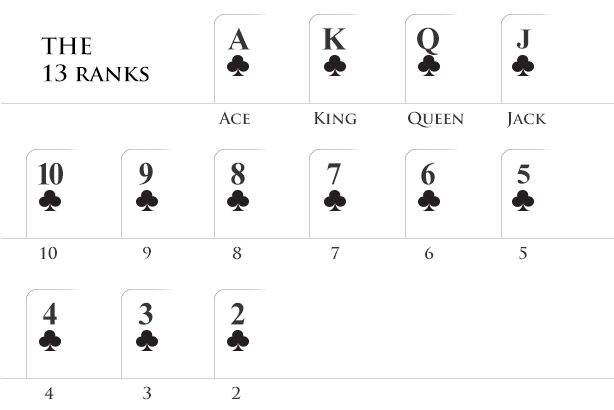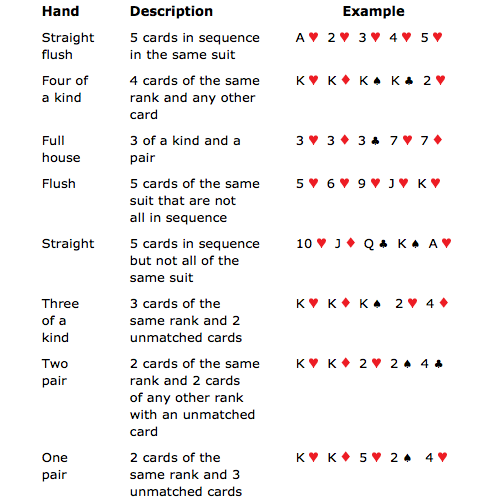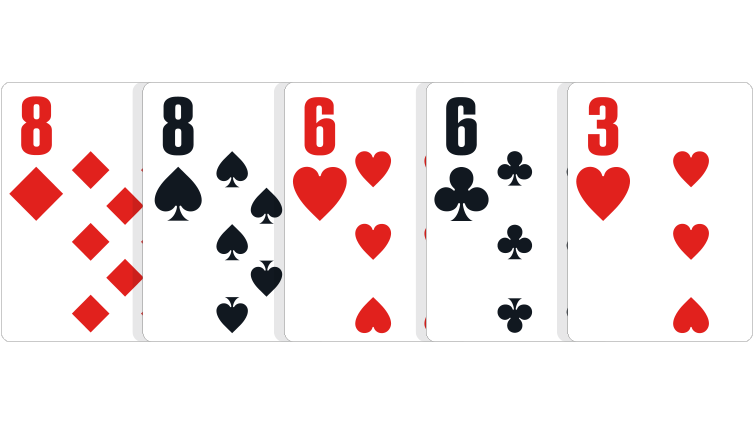Poker Hands Highest Suit
The poker deck consists of 52 cards that are ordered by poker card rank in the following order: A, K, Q, J, 10, 9, 8, 7, 6, 5, 4, 3, 2. The same cards of different suits have the same poker card rank.
For example - the king of spades and the king of hearts both have the same value.
- In games without wild cards, this is the highest ranking hand. It consists of five cards in sequence of the same suit. When comparing flushes, the hand with the highest value high card wins. Example: 5-6-7-8-9, all spades, is a straight flush.
- If no one has any of the above winning hands, the tie is determined by the highest value card in the hand. If the highest cards are a tie then the tie is broken by the second highest card. Suits are not used to break ties. Once you know the rules of the game, and the hand-ranks, you’re ready to dive into real money online poker!
- In that case, spades is the highest suit. How many poker hands are there? The total number of poker hands in a game of poker is 2,598,960. Since a game of poker uses a 52-card deck of French cards.
- There are 52 cards in a deck, divided into four suits of 13 ranks each. The suits are all of equal value - no suit is higher than any other suit. In Poker, the Ace is the highest card and the 2 card (Deuce) is the lowest. However, the Ace can also be used as a low card, with the value of 1.
A poker hand consists of five cards. Any poker hand ranking in a higher category beats any hand in a lower hand ranking category. For example, any flush wins any two pairs. Between hands in the same poker hand ranking the rank of the individual cards decides which is better. For example, if both players have three of a kind, one of them Q's and the other J's, the Q's three of a kind would win.
TOP 10 MOST AMAZING POKER HANDS EVER!Help us to 200K Subscribers - you are reading this, comment what poker video you want to see next.
Following is the ranking of poker hands ordered from highest(best) hand to lowest(worst) hand. Other instructions on online poker is available at poker4real.com
- Straight Flush - 5 cards of the same suit in sequence
- Example: A,K,Q,J,10 All spades
- Probability: 1 in 65,000
- Four of a kind - 4 cards of the same Rank
- Example: Q,Q,Q,Q,4 Different kinds
- Probability: 1 in 4,000
- Full house - 3 cards of the same rank and 2 different cards of same rank
- Example: J,J,J Of Different ranks K,K of different ranks
- Probability: 1 in 700
- Flush - 5 cards of the Same suit
- Example: 5,7,Q,J,A All spades
- Probability: 1 in 500
- Straight - 5 cards in sequence, but not of the same suit
- Example: 10,9,8,7,6 Not the same suit
- Probability: 1 in 250
- Three of a Kind - 3 cards with the same rank
- Example: 10,10,10,7,5 Different suits
- Probability: 1 in 50
- Two Pairs - 2 cards with the same rank, and 2 different cards with same rank
- Example: K,K,5,5,Q Different suits
- Probability: 1 in 20
- One Pair - 2 cards of same rank
- Example: 4,4,7,J,Q Different suits
- Probability: 1 in 2.3
- Nothing - Different Cards of Different Suits
- Example: 9,4,7,J,Q Different suits
- Probability: 1 in 2
When you get a hand of poker, first consider what is the probability that someone else has a better hand than yours and also think about how highly ranked your hand is. If you want to learn the origin of poker ranking hands visit our page
Jason Steyer - Gambling Columnist

High card by suit and low card by suit refer to assigning relative values to playing cards of equal rank based on their suit. When suit ranking is applied, the most common conventions are:
- Alphabetical order: clubs (lowest), followed by diamonds, hearts, and spades (highest). This ranking is used in the game of bridge.
- Alternating colors: diamonds (lowest), followed by clubs, hearts, and spades (highest). Similar to alphabetical ranking in that the two highest rankings are occupied by the same two suits (hearts and spades) in the same relative position to one another, but differing in the two lowest rankings, which while occupied by the same two suits (clubs and diamonds) have their relative position to one another swapped. This ranking is sometimes used in the Chinese card game Big Two or Choh Dai Di.
- Some Russian card games like Preference, 1000 etc. use the following order: spades (lowest), clubs, diamonds and hearts (highest). The Australian card game 500 also uses this ordering.
- Some German card games (for example Skat) use the following order: diamonds (lowest), hearts, spades and clubs (highest).
Poker[edit]
Most poker games do not rank suits; the ace of clubs is just as good as the ace of spades. However, small issues (such as deciding who deals first) are sometimes resolved by dealing one card to each player. If two players draw cards of the same rank, one way to break the tie is to use an arbitrary hierarchy of suits. The order of suit rank differs by location; for example, the ranking most commonly used in the United States is not the one typically used in Italy.
Cards are always compared by rank first, and only then by suit. For example, using the 'reverse alphabetical order' ranking, the ace of clubs ranks higher than any king, but lower than the ace of diamonds. High card by suit is used to break ties between poker hands as a regional variance,[1] but more commonly is used in the following situations, as well as various others, based upon the circumstances of the particular game:
- Randomly selecting a player or players.

- To randomly select a player to deal, to choose the game, to move to another table, or for other reasons, deal each player one card and the player with high card by suit is selected. Multiple players can be selected this way.
- Assigning the bring-in.
- In games such as Seven-card stud, where the player with the lowest-ranking face-up card is required to open the first betting round for a minimal amount, ties can be broken by suit. In such low stud games as razz, the player with the highest-ranking upcard must post the fractional bet.
- Awarding odd chips in a split pot.
- In High-low split games, or when two players' hands tie, the pot must be split evenly between them. When there is an odd amount of money in the pot that can't be split evenly, the odd low-denomination chip can be given to the player whose hand contains the high card by suit. (This solution is not necessary in games with blinds, in which case the odd chip between high and low is awarded to the high hand, and the odd chip between a split high or split low is awarded to the first player following the dealer button.)
- Breaking ties in a chip race
Poker Hands From Lowest To Highest Suit
- During poker tournaments, a chip race is used to 'color up' large numbers of smaller-denomination chips, and a modified deal is used to assign leftover chips. Ties in the deal are broken by suit.
Contract bridge[edit]
In bridge, suit rank during the bidding phase of the game is by ascending alphabetical order.
During the play of the cards, the trump suit is superior to all other suits and the other suits are of equal rank to each other. If there is no trump suit, all suits are of equal rank.
References[edit]
- ^'Rules of Card Games: Poker Hand Ranking'. www.pagat.com. Archived from the original on 28 May 2010. Retrieved 24 April 2018.
External links[edit]




